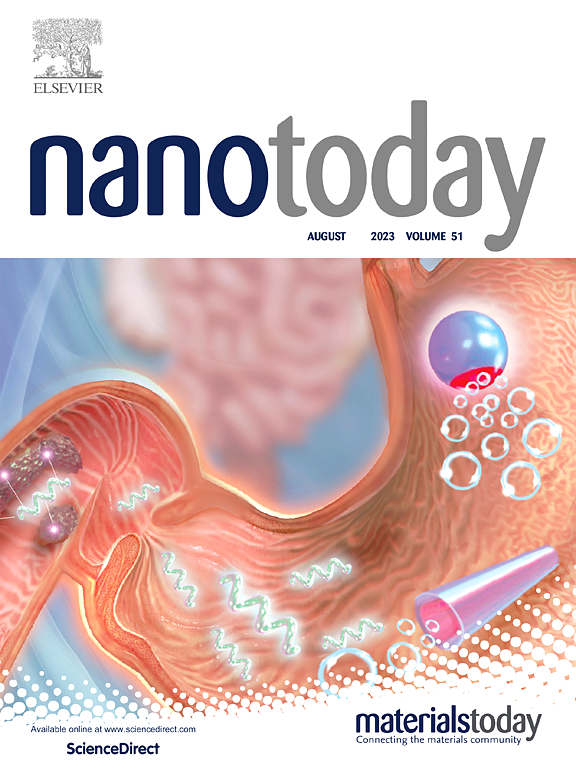细胞外囊泡的机械强度和生物力学
IF 10.9
1区 材料科学
Q1 CHEMISTRY, MULTIDISCIPLINARY
引用次数: 0
摘要
细胞外囊泡(EVs)是细胞间通讯的重要媒介,在生理和病理过程中都起着关键作用。它们的机械强度和生物力学特性不仅决定了结构稳定性、体内递送效率和生物功能,而且对疾病诊断和靶向治疗具有重要意义。本文系统总结了评估EV机械强度的方法和关键参数,并综合了现有证据,证明内部蛋白质网络、膜胆固醇和磷脂组成、AQP1和其他膜蛋白表达水平以及囊泡大小差异是EV弹性的主要结构决定因素。此外,源细胞的生理状态、生产过程和外部机械力也被认为是影响电动汽车力学性能的关键因素。此外,本文还全面讨论了具有不同机械特性的电动汽车在复杂生物环境中的适应性行为,特别关注它们的跨膜运输、循环动力学和靶向递送能力,并描述了具有不同弹性的电动汽车实现长时间循环和随后被受体细胞吸收的机制原理。本文综述了电动汽车的力学特性和生物力学原理在质量控制评价、疾病诊断和给药等方面的潜在应用,并对其在生物医学领域的发展前景进行了展望。本文章由计算机程序翻译,如有差异,请以英文原文为准。
Mechanical strength and biomechanics of extracellular vesicles
Extracellular vesicles (EVs) serve as essential mediators of intercellular communication and play a pivotal role in both physiological and pathological processes. Their mechanical strength and biomechanical properties not only dictate structural stability, in vivo delivery efficiency, and biological functionality but also have significant implications for disease diagnosis and targeted therapy. This review systematically summarizes the methodologies and key parameters used to assess the mechanical strength of EVs, and synthesizes current evidence identifying the internal protein network, membrane cholesterol and phospholipid composition, AQP1 and other membrane protein expression levels, and vesicle size differences as primary structural determinants of EV elasticity. Furthermore, the physiological state of the source cells, production processes, and external mechanical forces are also recognized as critical factors shaping EV mechanical properties. In addition, this review comprehensively discusses the adaptive behaviors of EVs with distinct mechanical characteristics in complex biological environments, with a particular focus on their transmembrane transport, circulation dynamics, and targeted delivery capabilities, and delineates the mechanistic principles by which EVs with varying elasticity achieve prolonged circulation and subsequent uptake by recipient cells. Based on recent advances, this review also explores the potential applications of the mechanical properties and biomechanical principles of EVs in quality control assessment, disease diagnostics, and drug delivery, while offering a forward-looking perspective on their future development in the biomedical field.
求助全文
通过发布文献求助,成功后即可免费获取论文全文。
去求助
来源期刊

Nano Today
工程技术-材料科学:综合
CiteScore
21.50
自引率
3.40%
发文量
305
审稿时长
40 days
期刊介绍:
Nano Today is a journal dedicated to publishing influential and innovative work in the field of nanoscience and technology. It covers a wide range of subject areas including biomaterials, materials chemistry, materials science, chemistry, bioengineering, biochemistry, genetics and molecular biology, engineering, and nanotechnology. The journal considers articles that inform readers about the latest research, breakthroughs, and topical issues in these fields. It provides comprehensive coverage through a mixture of peer-reviewed articles, research news, and information on key developments. Nano Today is abstracted and indexed in Science Citation Index, Ei Compendex, Embase, Scopus, and INSPEC.
 求助内容:
求助内容: 应助结果提醒方式:
应助结果提醒方式:


